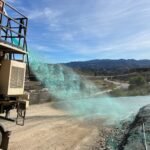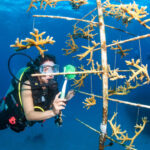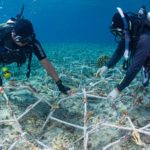Environmental Monitoring
An intelligent environmental monitoring system is a set of tools and technologies that allow collecting and analyzing information in real-time in relation to the environmental conditions of a specific geographical area. These systems use different environmental devices and sensors to measure several variables, such as air quality, temperature, humidity, noise level, radiation, and other environmental parameters.
In addition, environmental monitoring systems generally use network communication technologies to submit data and alerts, which enables a quick response in the event of an environmental emergency or risk.
Continuous emissions monitoring: Environmental monitoring systems can measure the concentration of contaminants in residual gases derived from industrial processes on a constant basis. These systems can measure and monitor pollutants, such as particles, nitrogen dioxide, sulphur dioxide, carbon monoxide, hydrofluoric acid, hydrochloric acid, ammonia, and total organic compounds, among other non-polluting components, like steam, oxygen, etc.
Air quality control: intelligent monitoring systems can measure the concentration of hazardous substances in ambient air, such as nitrogen dioxide, ozone, sulphur dioxide, and suspended particles, apart from other substances, like ammonia, hydrofluoric acid, volatile organic compounds, mercury, hydrofluoric acid, etc.
Acoustic pollution: these systems can measure noise levels and vibration in a specific environment. This allows evaluation of the impact of human activity on the acoustic pollution of an area.
Water quality: intelligent environmental monitoring systems can measure the quality of water, including temperature, pH, turbidity, conductivity, dissolved oxygen concentration, and the presence of contaminants.
Radiation: these systems can measure background radiation, including ionizing and non-ionizing radiation.
Weather information: intelligent environmental monitoring systems can measure several weather parameters, such as temperature, humidity, wind speed, wind direction, and rain.
Your Gateway to a Sustainable Future.
Our expertise includes, but is not limited to,
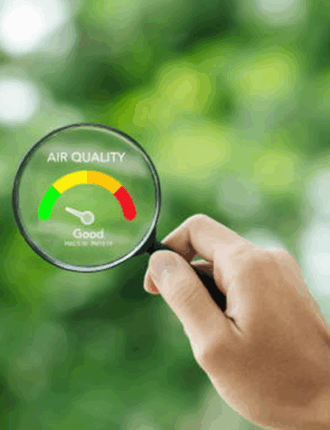
Air Quality Control

Acoustic pollution

Water Quality
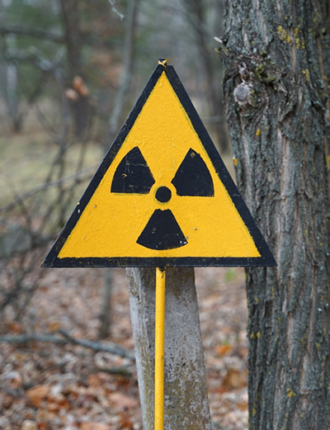
Radiation

Weather Information
From Assessment to Action – Restoring Nature, One Step at a Time!

Assessment & Survey
Conduct ecological surveys to analyze biodiversity, habitat conditions, and environmental impact.

Planning & Strategy
Develop targeted restoration plans, including afforestation, coral reef rehabilitation, and carbon footprint reduction.

Implementation & Action
Execute restoration projects like mangrove planting, habitat conservation, and pollution mitigation.

Monitoring & Sustainability
Track progress, measure ecosystem recovery, and ensure long-term environmental resilience.
Where nature thrives and the alpine spirit flourishes—preserving beauty, sustaining life!


From Assessment to Action – Restoring Nature, One Step at a Time!
Browse the topics below to find what you are looking for.
Environmental monitoring involves collecting and analyzing data on environmental conditions like air and water quality, noise levels, and radiation. It’s crucial for detecting pollution, ensuring regulatory compliance, and protecting public health and ecosystems.
GreenVision KSA provides comprehensive environmental monitoring services, including air quality control, water quality assessment, noise and vibration measurement, radiation detection, and weather parameter monitoring, utilizing advanced sensors and real-time data analysis.
They use intelligent systems to measure pollutants like nitrogen dioxide, ozone, sulfur dioxide, and particulate matter, ensuring ambient air quality meets health and environmental standards.
GreenVision KSA evaluates water quality by measuring temperature, pH, turbidity, conductivity, dissolved oxygen, and contaminant presence to ensure water safety and compliance.
They assess acoustic pollution by measuring noise levels and vibrations in specific environments, helping to evaluate the impact of human activities and implement mitigation strategies.
Radiation monitoring involves detecting background radiation, including ionizing and non-ionizing types, to ensure environmental and public safety.
GreenVision KSA’s systems track weather parameters like temperature, humidity, wind speed and direction, and rainfall, providing comprehensive environmental data for analysis and decision-making.
Real-time data allows for immediate detection of environmental changes or hazards, enabling swift responses to emergencies and informed decision-making for environmental management.
MAKE AN IMPACT
Contact Us
Al Kadi Tower,Ist Floor, Room No.7, Building No.2191, Zuhair bin Qais Street, An Nada, Dammam – 34263
Got A Question?
Please complete the form below.
We’ll follow up with you in 6Hrs.




